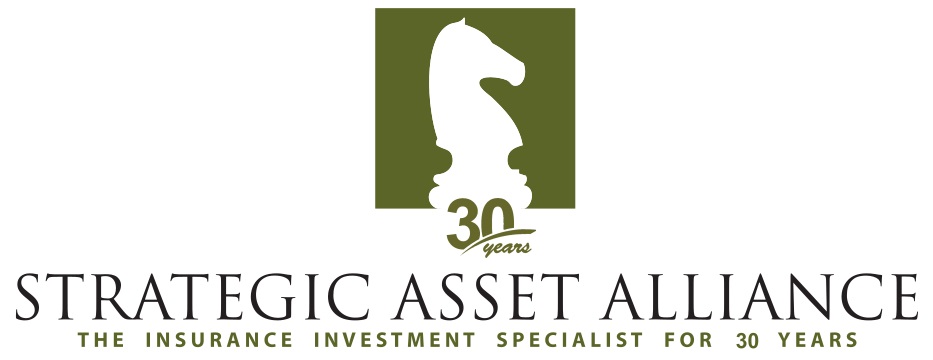What is Opportunity Cost?
The loss of potential gain from other alternatives when one alternative is chose.
What is a Fiduciary?
A fiduciary is legally and ethically held to ensuring any financial/investment services and expertise they provide your insurer is solely in the best interest of your organization.
Understanding Risk Tolerance:
As the Board and management are made up of individuals, each individual’s personal biases and history influences their tolerance for risk.
Learn More >>
How to Help Your Insurer's Board Members Fulfill Their
Investment Responsibilities
View PDF / Appendix >>
Given the growing concern over Board turnover within the insurance industry, we developed a primer to help Board Members understand and review their role within the insurer’s investment operations.
This primer highlights a Board Member’s investment responsibilities, as well as common errors. An Appendix can also be found in the complete primer (PDF) to further detail the key elements of an insurer’s investment process.
What Are a Board Member’s Investment Responsibilities?
Board Members for insurance companies carry numerous duties as part of their overall responsibilities for the insurer’s investment operations:
- To act with ‘reasonable’ skill and care;
Dependent upon the board member’s personal knowledge. - To take advice where appropriate;
If not fluent with investments, board members should get proper advice unless the cost of advice is prohibitive relative to the size of the insurer. Any advice being truly considered should also carry a suitable level of risk and diversification. - To keep investments under review;
Investments should be reviewed regularly by board members in conjunction with appointed advisors, as applicable.
Board Members must also include these key elements into their decision-making process as it relates to their investment responsibilities:
- Suitability
Board Members must take into account the needs of the policyholders, the goals and objectives of the insurer, and type of existing investments. Board Members must also determine whether it would be more appropriate to invest in other investment classes. - Diversification
Board Members should be mindful of maintaining a spread of investments with a view to reducing the overall risk profile of the insurer. - Delegation, not abdication, of investment management functions
While board members may appoint a discretionary manager, the manager must act within a written investment policy statement, with board members periodically reviewing that statement. The manager should advise how they incorporate the Boards’ adopted investment policy when the manager makes investment decisions or recommendations.
Given these considerations, it is important that board members understand their insurance company’s investment process in order to correctly apply these elements and fulfill their overall investment responsibilities.
What are typical errors Board Members make?
Board Members are often unaware of investment decisions that could have provided an opportunity for improvement, but are never shown on your financial statements:
- Not considering all possible asset classes or investments within that asset class can result in lower investment income
- Not considering the possibility and the potential impact from a more diversified portfolio can result in lower portfolio investment returns, adjusted for risk.
- Not reviewing your insurer’s investment process periodically can result in poorer investment results.
- Not reviewing investment management fees can result in lower investment income and returns.
Another common error Board Members make is applying practices that are typical for personal investments, but are not applicable to an insurance company's investment process.
- Personal investment portfolios differ greatly from an insurer’s, for example objectives, time horizon, constraints, and tax situation.
- Likewise, board members can also mistakenly apply investment practices they’ve seen for endowments, foundations, pension funds, etc. However, an insurer’s practices greatly differ.
- Board Members should always consider enterprise risk factors specific to insurance companies when making investment decisions.
Finally, many Board Members do not receive investment advice from a true Fiduciary, which may result in actions that are not in the best interest of your insurance company.
Key Considerations and Next Steps
 Understanding Regulatory Constraints on Allowable Asset Classes:
Understanding Regulatory Constraints on Allowable Asset Classes:
Regulations can impose constraints on potential allocations to certain asset classes. Thus, a review of the applicable regulatory framework is an integral part of any asset allocation modeling.
 Determining Risk Appetite:
Determining Risk Appetite:
Risk tolerance is vital to the strategic asset allocation process. The amount of risk an insurer is comfortable taking on within the portfolio will shape the overall investment program.
A short questionnaire to staff and Board members can help put some constraints around any asset allocation models being reviewed.
Most importantly, scenario-based impact analyses can be helpful in identifying and adopting an appropriate asset allocation framework.
 Review Current Asset Allocation and Potential Alternatives:
Review Current Asset Allocation and Potential Alternatives:
Insurers can compare their current asset allocation to other potential models in various ways. Potential asset allocation models can be focused on the asset side of the balance sheet or can also include the impact of reserves.
Many also model asset allocations by considering reserves, surplus, and other financial considerations. Because insurers already have leverage built into their financial statements, evaluating the additional leverage from investment allocation decisions is important to manage the enterprise risk.
It may also be beneficial to test how your portfolio may perform by simply changing the allocated amount to certain asset classes.
Continue to Appendix: Key Elements of an Insurance Company's Investment Process >>

